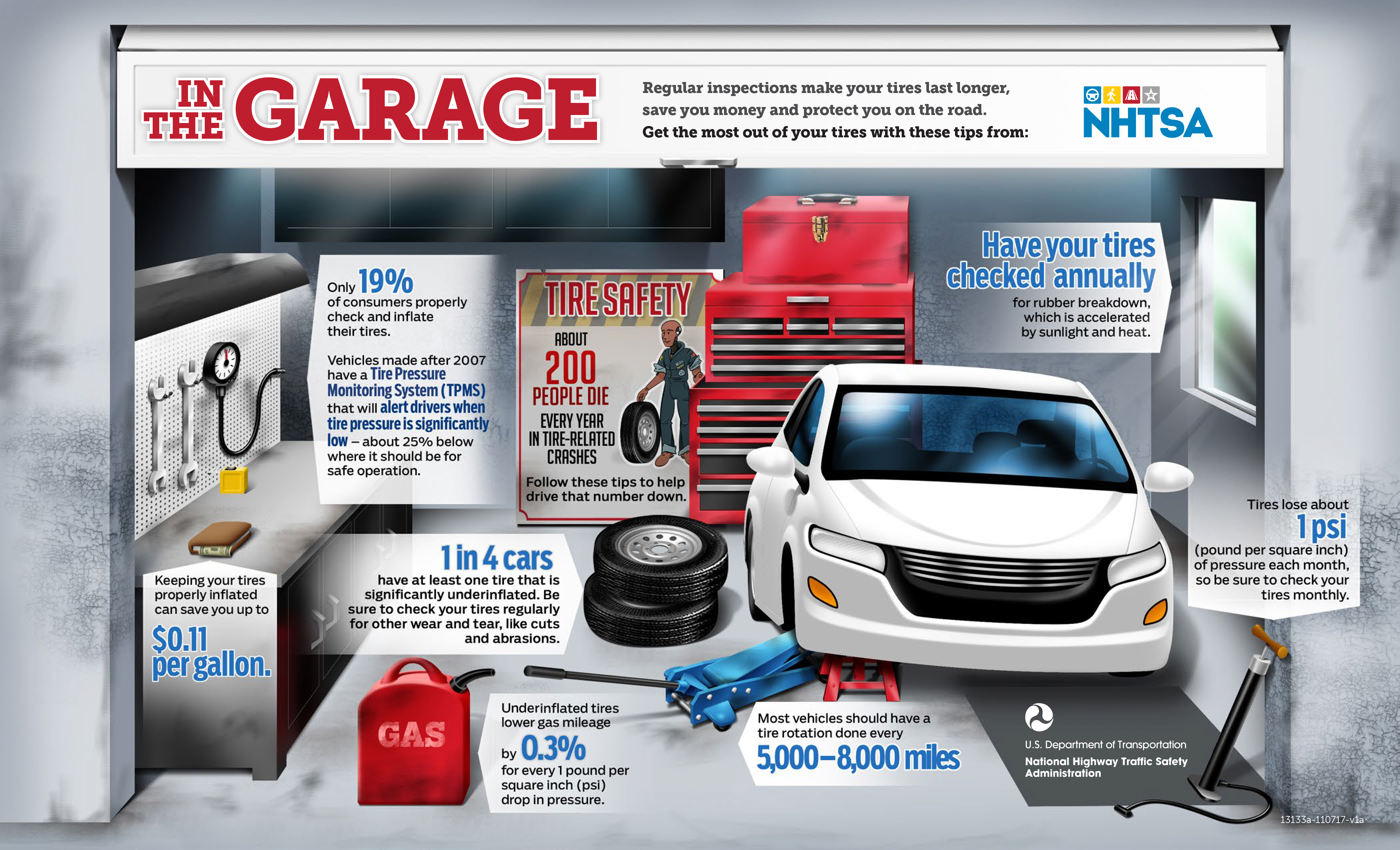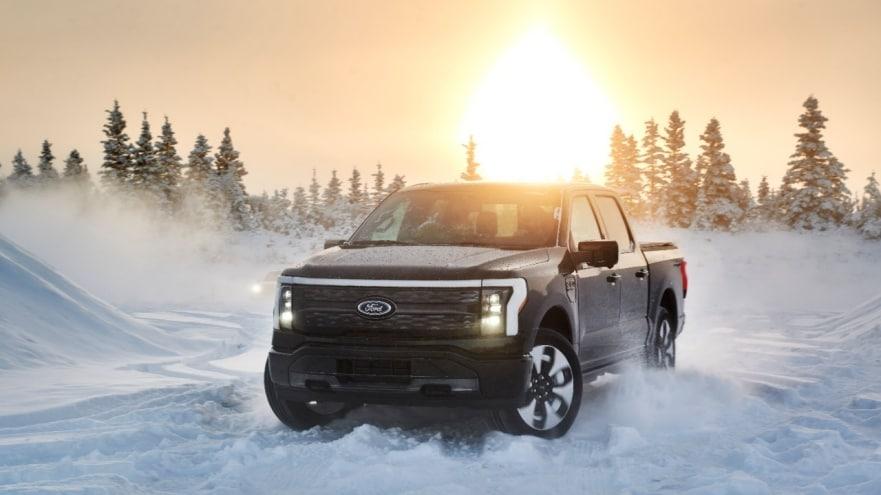In order to get the most out of your winter tires, it is important to follow a few simple tips. First, make sure that your tires are properly inflated. This will help to improve traction and prevent flats.
Secondly, avoid driving through deep snow or puddles of water, as this can damage your tires. Finally, have your tires regularly inspected by a professional to ensure that they are in good condition. By following these tips, you can help to prolong the life of your winter tires and ensure safe travels all season long.
If you live in an area where it snows or gets icy in the winter, then you know how important it is to have good winter tires on your car. Winter tires are designed to provide better traction and grip on snow and ice, which can help you avoid accidents. But even with the best winter tires, there are still some things you can do to maximize their performance.
Here are a few tips:
1. Keep your tires inflated to the proper pressure. This will help them last longer and perform better.
2. Check your tread depth regularly. The deeper the tread, the better the tire will perform in snow and ice.
3. Avoid driving too fast.
Faster speeds mean less control, so it’s best to take it slow when conditions are slippery.
Model Y Performance – 5 cold weather tips! Maximize winter range.
How Do I Make My Tires Better in the Snow?
There are a few things you can do to make your tires better in the snow. First, make sure you have the right type of tires for your vehicle. Some tires are designed specifically for use in winter conditions.
Second, keep your tires inflated to the proper pressure. This will help maintain traction and prevent excessive wear. Third, clean your tires regularly to remove any build-up of dirt or debris that could reduce traction.
Finally, consider using tire chains or snow socks if you frequently drive in deep snow or on icy roads.
How Can I Improve My Tire Performance?
Tire performance is essential to the handling and safety of your vehicle. Here are a few tips on how to improve tire performance:
1. Check tire pressure regularly- Tire pressure that is too low or too high can affect grip and handling.
Use a reliable tire pressure gauge to check your tires’ pressure and inflate or deflate accordingly.
2. Inspect tires for wear and tear- Worn tires can cause decreased traction and stability. Inspect your tires regularly for signs of wear, such as balding, cracking, or excessive tread wear.
If you notice any of these issues, it’s time for new tires.
3. Avoid potholes and other road hazards- Potholes can cause serious damage to your tires, including punctures, flats, or even blowouts. When driving, be on the lookout for potholes and other road hazards so you can avoid them if possible.
4. Keep your wheels in alignment- Proper wheel alignment is key to maintaining control of your vehicle. Over time, wheels can become misaligned from hitting bumps or potholes in the road.
What Psi Should I Run My Winter Tires At?
If you’re like most people, you probably don’t think much about the air pressure in your tires. But if you’re driving on winter tires, it’s important to make sure they’re inflated to the proper level. Doing so will help improve your traction and handling on snow and ice.
So what psi should you run your winter tires at? The answer may surprise you.
Most passenger cars come with a recommended tire pressure of 30-35 psi.
But when it comes to winter driving, experts say that you should inflate your tires to a higher level, somewhere in the range of 35-45 psi. The extra air pressure will help firm up the treads on your tires, giving you better grip on slippery surfaces.
Of course, every car is different, so it’s important to consult your owner’s manual or a trusted mechanic before making any changes to your tire pressure.
They’ll be able to tell you exactly how much air pressure your car’s tires can safely handle.
Once you’ve inflation levels sorted out, there’s one more thing to keep in mind: checking your tire pressure regularly. Cold weather can cause the air in your tires to leak out faster than usual, so it’s important to check them once a week or so during the winter months.
A simple gauge can help you do this quickly and easily.
By following these tips, you can help ensure that your winter tires are up for the challenge of keeping you safe on icy roads all season long!
Should You Fill Your Tires to Max Psi in the Winter?
Most people think that they should fill their tires to the maximum psi in the winter, but this is actually not the case. The reason for this is because the extra air pressure can cause the tire to crack or even burst in cold weather. It is recommended that you fill your tires to about 30-35 psi in the winter.
This will give you enough traction and will prevent any damage to your tires.

Credit: www.nhtsa.gov
How Long Do Blizzak Tires Last
If you live in a cold climate, then you know the importance of having good winter tires. Blizzak tires are some of the best on the market and they can definitely help you get through a tough winter. But how long do they last?
The answer to that question depends on a few factors, but in general, you can expect a set of Blizzak tires to last for about 3-5 seasons. That may not seem like very long, but keep in mind that these tires are designed for use in very specific conditions. They work great in snow and ice, but they wear down quickly on dry pavement.
So, if you only use your Blizzaks during the winter months and take care of them properly, they should last quite awhile. But if you’re using them all year round or neglecting them, then don’t be surprised if they only last for one or two seasons.
Are Winter Tires Worth It
Are winter tires worth it? This is a question that many drivers ask as the weather gets colder. Winter tires are designed to provide better traction and handling in snow and ice, and they can make a big difference in your safety on the road.
But are they worth the extra cost?
Here’s a look at some of the pros and cons of winter tires:
Pros:
Better traction and handling. Winter tires are made from a softer rubber compound that stays pliable in cold weather, providing better grip on icy or snowy roads. They also have deeper tread patterns than regular tires, which helps to clear away snow and prevent you from slipping and sliding.
Improved safety. In addition to helping you stay in control on slippery roads, winter tires can also shorten your stopping distance on icy surfaces. This can be a lifesaver if you need to brake suddenly in an emergency situation.
Longer life span. With proper care, winter tires can last for several seasons. That means you don’t have to buy new ones every year, which can save you money in the long run.
M+S Tires
M+S Tires are a type of all-season tire that is designed to provide good traction and handling in both dry and wet conditions. These tires typically have a tread pattern that includes large, deep grooves that help to evacuate water from beneath the tire. M+S Tires are often used on SUVs and light trucks, but they can also be used on passenger cars.
All Weather Tires
When it comes to all weather tires, there are a few things you need to know in order to make the best decision for your vehicle. All weather tires are designed to provide optimal performance in a variety of conditions, including both wet and dry weather. They typically have a deeper tread depth than regular passenger tires, which provides better traction and grip in slippery conditions.
One of the most important things to consider when shopping for all weather tires is the type of vehicle you drive. If you have a light-duty vehicle, such as a sedan or coupe, then you can probably get by with an all-season tire. However, if you drive a heavier vehicle, such as an SUV or truck, then you may need an all-terrain tire, which is designed for more rugged terrain and off-road use.
Another thing to keep in mind is the climate where you live. If you live in an area with mild winters and little snowfall, then an all-season tire should be fine. But if you live in an area with severe winters and heavy snowfall, then you’ll need a tire that’s specifically designed for winter driving conditions.
Winter tires typically have special tread patterns and compounds that help them grip icy roads better than all-season tires.
No matter what type of vehicle you drive or where you live, there’s an all weather tire out there that’s perfect for your needs. With so many options available, it’s easy to find one that will provide excellent performance in any condition.
Summer Tires
Summer is the perfect time to enjoy the open road. But before you hit the gas, make sure your vehicle is equipped with summer tires. These special tires are designed to provide optimal performance in warm weather conditions.
Here are some things to keep in mind when shopping for summer tires:
1. Summer tires are available in a variety of sizes and tread patterns. Choose the size and type that best fits your vehicle and driving needs.
2. Summer tires typically have a softer compound than other types of tires. This helps them grip the road better in warm weather conditions.
3. Make sure to properly inflate your summer tires.
Overinflated or underinflated tires can impact performance and handling.
Conclusion
If you live in an area with harsh winter conditions, then you know how important it is to have a good set of winter tires. Winter tires are designed to provide better traction and handling in snow and ice than regular tires. Here are some tips on how to get the most out of your winter tires:
1. Make sure your tires are properly inflated. This will help them last longer and perform better.
2. Check the tread depth regularly.
The deeper the tread, the better the tire will be able to grip the road. 3. Avoid driving through deep snow or puddles of water if possible. This can damage your tires or cause them to lose traction.
4. When parking, try to park in a spot where your tires will not be exposed to direct sunlight or heaters/air conditioners vents. These can cause the tire rubber to break down over time.

